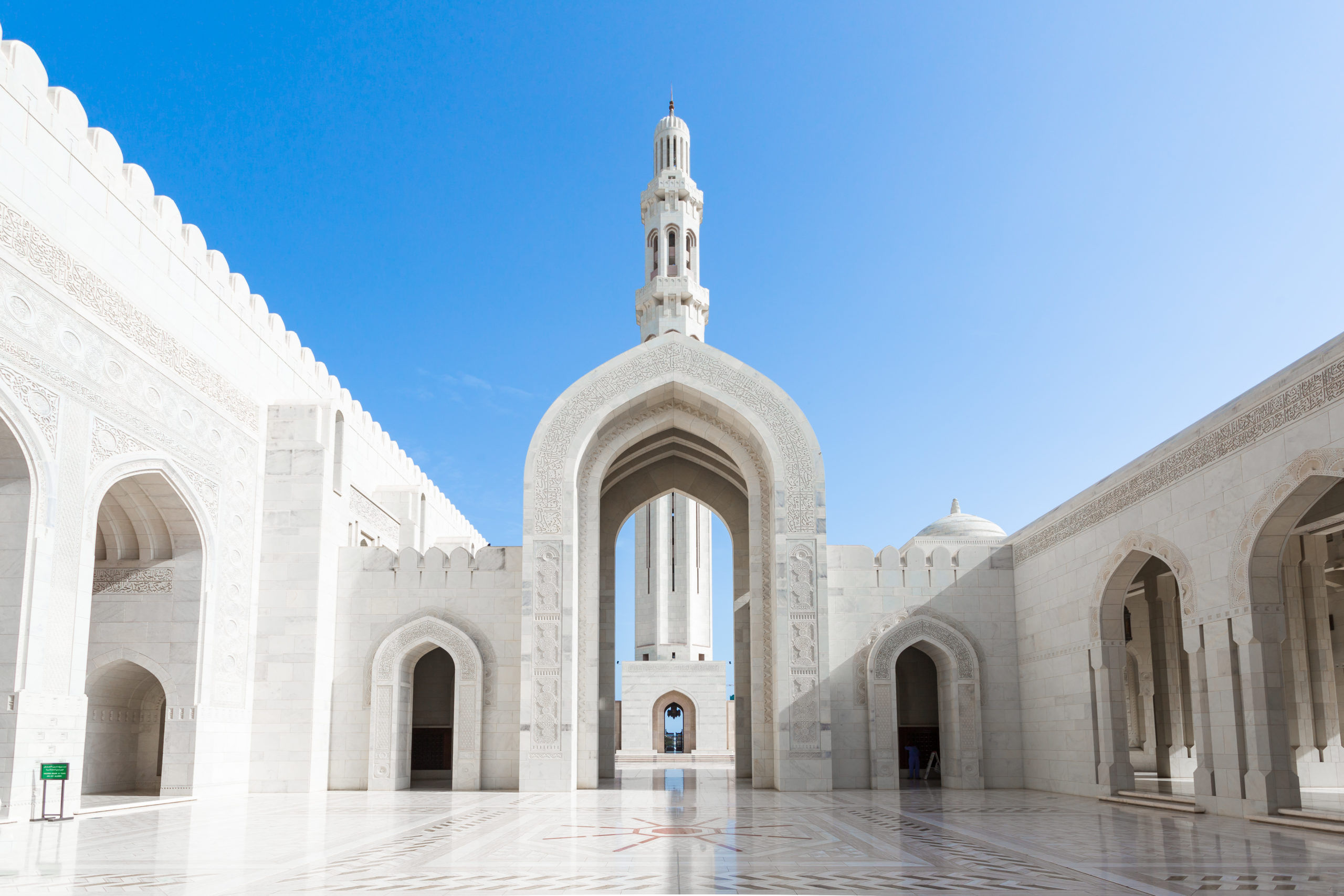
Since time immemorial, mosques have served as the seat of religious and cultural learning in Islam and hold immense value. Adorned with stunning architecture and jaw-dropping aesthetics, there are several beautiful mosques across the world for which words fall short.
Surrounded by towering minarets, expansive carved domes and intricate works that cover the walls, some of the world’s most beautiful mosques are also classic architectural specimens. Apart from their rich historical value, visitors from all over the globe flock to these religious sites for a glimpse of these minute detailing and intricacies that were made by hand centuries ago.
With Ramadan beginning on 2 April 2022, mosques are busy getting ready for the occasion as people prepare their month-long fasting rituals. However, even if you are not religious, the grandeur, architecture and historical significance of these stunning mosques are reasons enough to add to your must-visit places list.
Here are some of the most beautiful mosques from around the world
Nasir al-Mulk Mosque, Iran
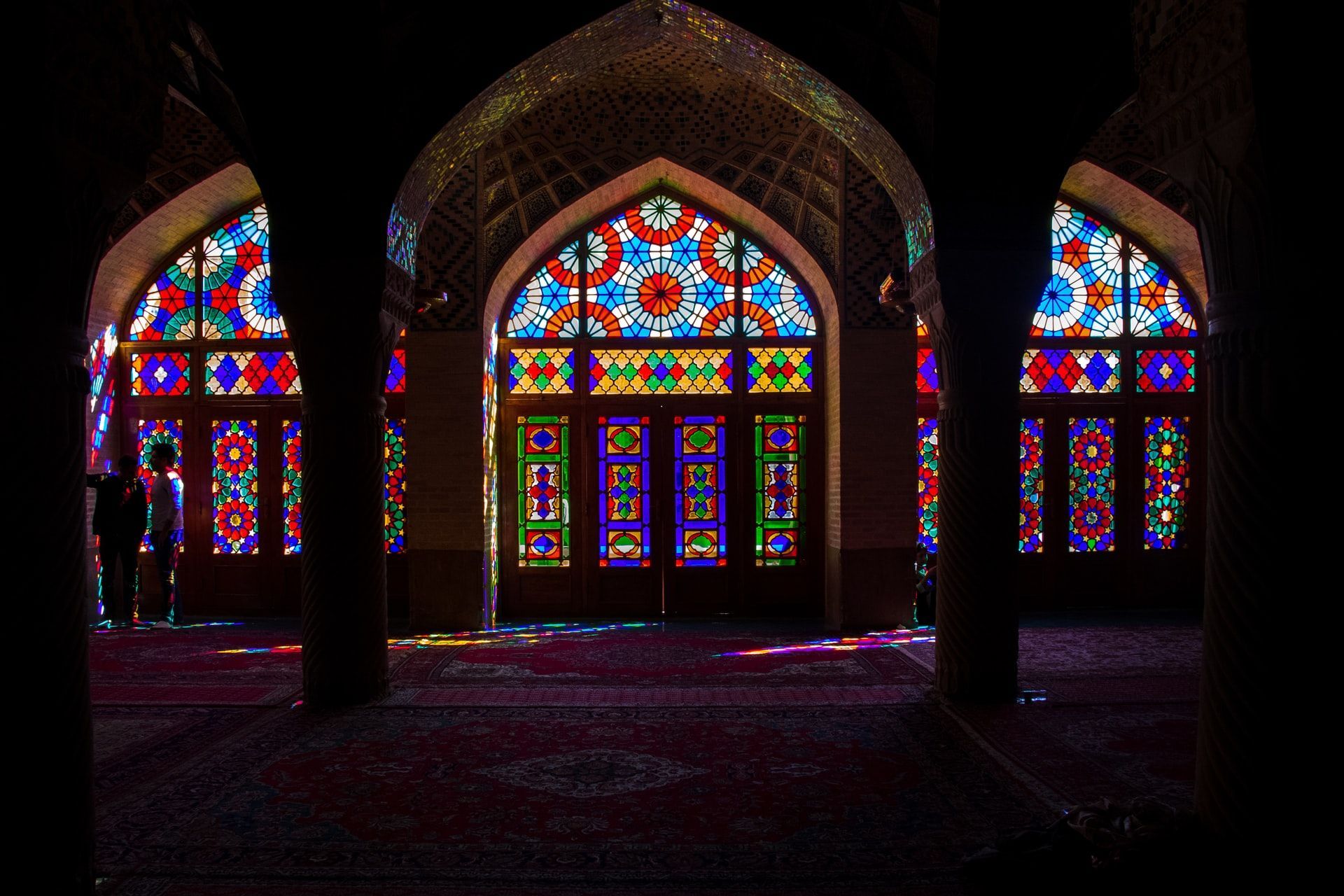
Nicknamed the Pink Mosque, Nasir al-Mulk Mosque is located in Iran’s old city of Shiraz. It was built during the Qajar period (1789-1925) by the order of Mirza Hassan Ali Khan Nasir al-Mulk, the son of one of the Persian rulers of the period.
The incredible play of dazzling lights streaming in through the stained glass windows welcome guests into a kaleidoscope of colours right from the beginning. Try visiting early in the morning to witness this incredible show of lights and colours in shades of red, azure, yellow, orange and green.
The entrance porch is covered in colourful tiles in shades of blue, yellow, pink, azure and white. When coupled with the grand wooden door of the facade, it makes up for an entrance like no other. Another unique feature of this marvellous architecture is the two shabestan (an underground space that can be usually found in the traditional architecture of mosques) on the eastern and western sides.
The western shabestan is connected to the beautiful courtyard of the mosque by seven wooden gates. These doors wear the art of Gereh Chini (Trelliswork) and pieces of coloured glass.
On the other hand, the eastern one is dedicated to a winter space. The mosque courtyard also has a shallow pool, providing some stunning photography sites.
Sheikh Zayed Grand Mosque, UAE
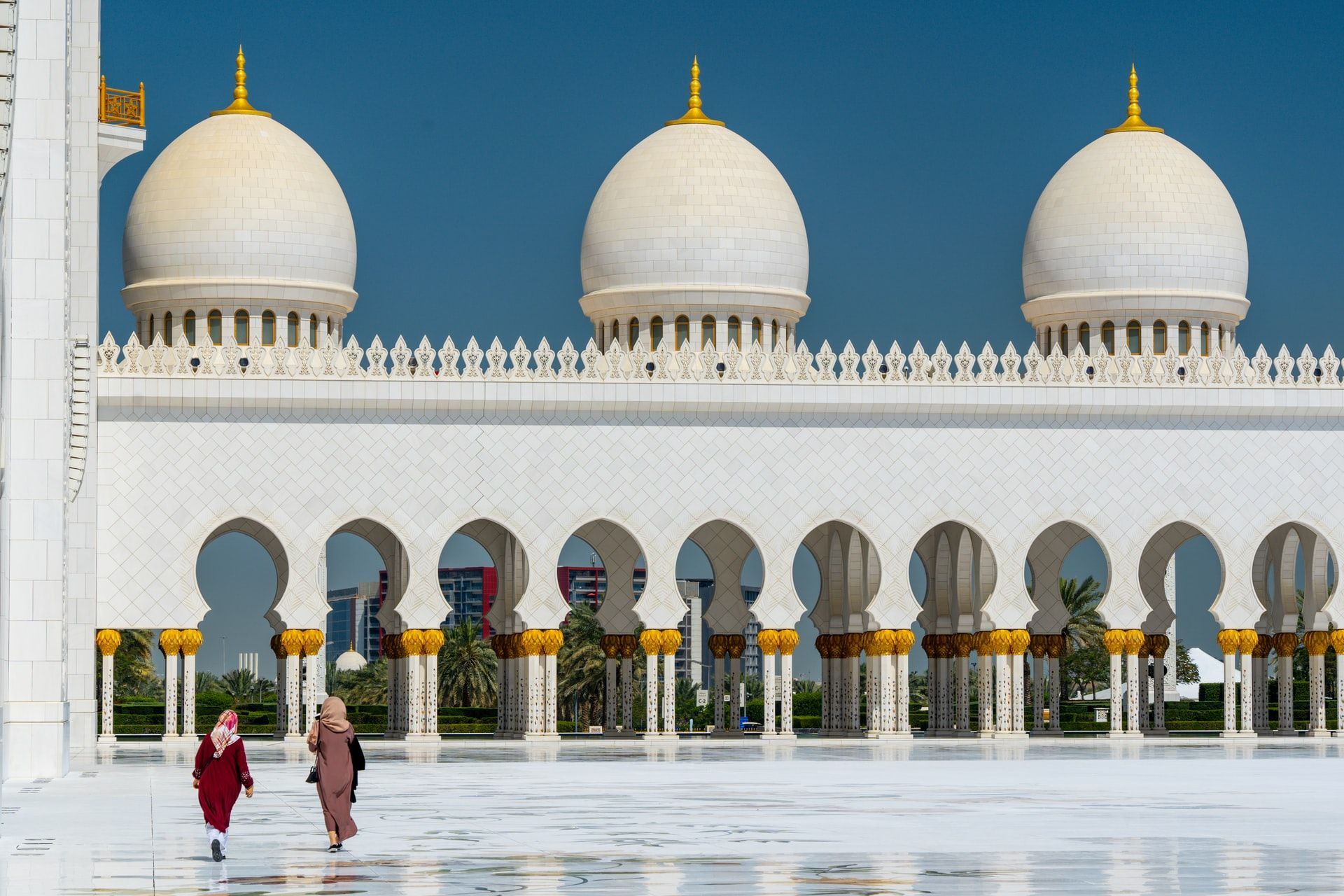
With a height of over 100 metres, the Sheikh Zayed Grand Mosque is one of the architectural and cultural havens of Abu Dhabi.
Sheikh Zayed bin Sultan Al Nahyan, the founding father of the UAE, started building the mosque in 1996. Seamlessly blending different schools of Islamic architecture, it features 82 domes, over 1,000 columns, 24-carat-gold gilded chandeliers and the largest hand-knotted carpet in the world. In fact, the main prayer hall is home to one of the world’s largest chandeliers.
The pure white marble domes spell grandeur in all its forms with onion-shaped ‘crowns’ and crescent-shaped finials decorated with gold-glass mosaic. The largest of them sits at the centre of the main prayer hall. The towering minarets mark the confluence of Mameluke, Ottoman and Fatimid architectural styles into one body of Islamic art and beauty.
The mosque is surrounded by four minarets, each around 106 metres tall, composed of three distinct geometric shapes. A square forms the minaret’s base with an architecture that is reminiscent of Moroccan, Andalusian and Mameluke styles. The second section of the minaret has an octagonal shape, which is a design that goes back to the Mameluke era (13th to 16th centuries). The third section is cylindrical, which dates back to the Ottoman era (14th to 20th centuries). These are followed by the crowning lantern covered with gold-glass mosaic of the Fatimid era (10th to 12th centuries).
You will be rather surprised to learn that the world’s largest hand-knotted carpet sits inside the main prayer hall. The intricate Islamic medallion design was made by third-generation carpet maker and artist Dr Ali Khaliqi. Made mostly out of wool, the single-piece carpet is 5,700 square metres and took around 1,200 artisans to craft it to perfection. The entire project took two years to complete. This includes eight months for the design and 12 months for the knotting.
The Sheikh Zayed Grand Mosque houses seven crystal chandeliers by Faustig of Munich, Germany. The largest of them measures 10 metres in diameter. It is 15 metres tall and weighs 12 tonnes. The main prayer hall features two smaller versions, weighing 8 tons each, of the same design. Meanwhile, visitors can spot four blue chandeliers of similar design and size at the foyer entrances around the mosque.
Dusk is the best time to visit the mosque, and a strict dress code must be maintained on the premises. One has to keep shoulders and knees covered at all times and remove shoes at the entrance. Women are also asked to wear abayas that are provided free.
Al-Aqsa Mosque, Old City of Jerusalem
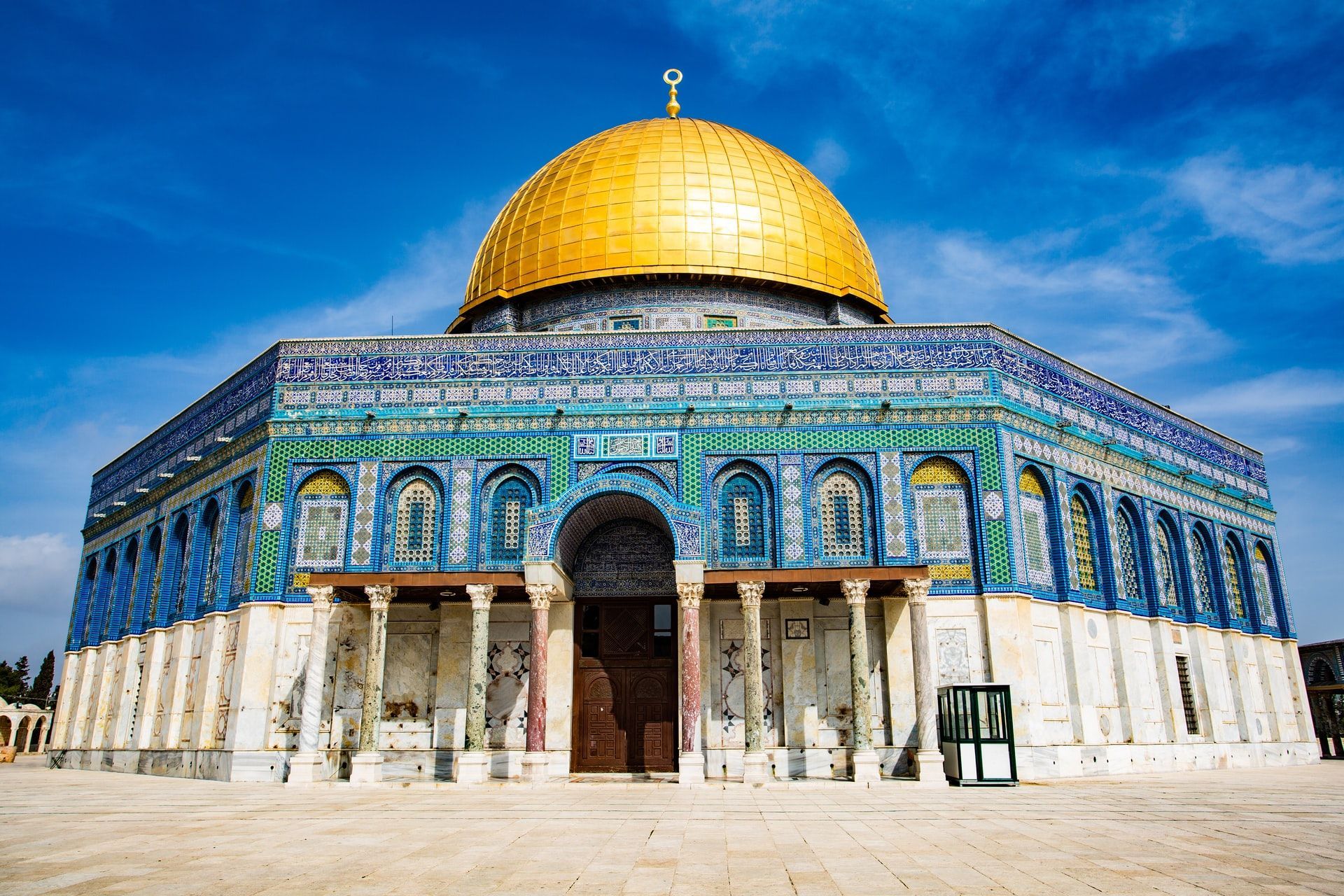
Considered the third holiest site of Islamic pilgrimage, the Al-Aqsa Mosque is also a UNESCO World Heritage Site. It is believed that Prophet Muhammad was transported here from the Al-Haram Mosque in Mecca before ascending to heaven. The mosque has been rebuilt several times as it was impacted by earthquakes.
A holy site for both Muslims and Jews, the mosque sits inside a 35-acre compound referred to as al-Haram al-Sharif, or the Noble Sanctuary, by Muslims, and as the Temple Mount by Jews. The Dome of the Rock, a seventh-century structure inside the mosque complex, is believed to be the site where Prophet Muhammad ascended to heaven.
For the Jews, this is the place where the Biblical Jewish temples once stood. The compound’s western wall, also known as the Wailing Wall, is believed to be the last remnants of the Second Temple. Muslims, too, have their beliefs regarding the wall. They refer to it as al-Buraq Wall, the place where Prophet Muhammad tied al-Buraq, the animal that took him to God.
The mosque rests on a platform supported by arches, built to tackle typographic conditions. It houses a Dome of Rock that reflects Byzantine architecture. Though not much remains of the actual dome, the present-day version has wood and enamel work. The mosque facade, too, features balustrades, comprising arcades and small columns.
While the interior features seven aisles and many halls, the stunning blue turquoise, gold mosaic and inscriptions face the main entrance near the dome and make for a jaw-dropping view. The complex has a number of mosques inside it, including Buraq Masjid, Marwani Mosque and the main Qibla Mosque.
Bibi-Khanym Mosque, Uzbekistan

The great mosque is an architectural beauty in the ancient city of Samarkand. Built between 1399 and 1404, the mosque is named after Mongol leader Timur’s wife. The construction began after Timur’s successful campaign in India.
The mosque was designed to be a sight of beauty and grandeur such that it would eclipse all other sites that Timur had ever seen. With such an ambition, hundreds of architects, craftsmen, artists and artisans from all over the East were brought in for the construction of the building.
Measuring about 130 x 102 square metres, the mosque can hold over 10,000 people at a time. On the western side of the courtyard is the main mosque, or jami, while many smaller mosques lace the northern and southern ends.
Decorated with marble tiles, this courtyard itself is a beauty to behold. The entrance is decorated as a high portal with two round minarets of 50 metres in height each. The facade of the mosque is lined with a grand portal and two minarets. The walls wear glazed bricks with large Arabic letters. The impeccable blue domes make the mosque one of the most stunning examples of the Persian style of architecture in the world.
Sultan Ahmed Mosque, Turkey

Though officially known as the Sultan Ahmed Mosque, or Sultanahmet camii in Turkish, it popularly goes by the name of Blue Mosque. The grand ceiling of the mosque in Turkey shines gleefully because of the 20,000 hand-painted blue Iznik tiles that feature abstract art, flowers and trees.
Built during the Ottoman empire, the grand blue mosque was commissioned by Sultan Ahmed I between 1609 and 1616, and architect Sedefkâr Mehmed Ağa planned the building. The exterior is a series of five main domes and eight secondary domes that seem to come rolling down like a cascade from the central one. Surrounded by six needle-like minarets, the mosque harmoniously combines Byzantine Christian and traditional Islamic architectural elements. It is one of the three mosques in Turkey to have these many minarets.
The stunning blue tiles adorn the interiors, giving it a royal oriental vibe. Verses from the Quran and sayings of Prophet Muhammad make the walls a living piece of history and culture. The upper levels of the mosque are well lit by natural light pouring in through the 200 stained glass windows and beautiful chandeliers. Built right across the famous Hagia Sophia, the Blue Mosque was the Sultan’s way of rivalling the former’s beauty and fame.
Housing the tomb of the founder, a madrasa and a hospice, it is an active mosque and worshippers go there even today. For this reason, it remains closed to visitors during the prayer five times a day. It is mandatory to dress appropriately and keep your head covered before entering the premises.
Hassan II Mosque, Morocco

It won’t be an exaggeration to call the Hassan II Mosque the crown of Morocco. Located on an outcrop that overlooks the azure waters of the Atlantic Ocean in Casablanca, the mosque spells grandeur and opulence at every turn. It has the tallest minaret in the world, towering at 210 metres.
Showcasing the finest examples of Moroccan craftsmanship, the great mosque is home to some of the most exquisite hand-carved stone and wood, intricate marble flooring and inlay, gilded cedar ceilings and amazing zellige (geometric mosaic tilework). The delicately carved fragrant cedar wood from Middle Atlas and pink granite from Agadir are as stunning as it gets. The gates are made from brass and titanium, and the ablution fountains in the basement, in huge lotus shapes, were carved from local marble.
One of the largest mosques in Africa, it can accommodate 105,000 worshippers — 25,000 inside, the rest in courtyards outside.
Visitors must keep their knees and upper arms covered on the premises of the mosque, and women don’t need headscarves. Guided tours last for about 45 minutes and are available in many languages.
Sultan Qaboos Grand Mosque, Oman
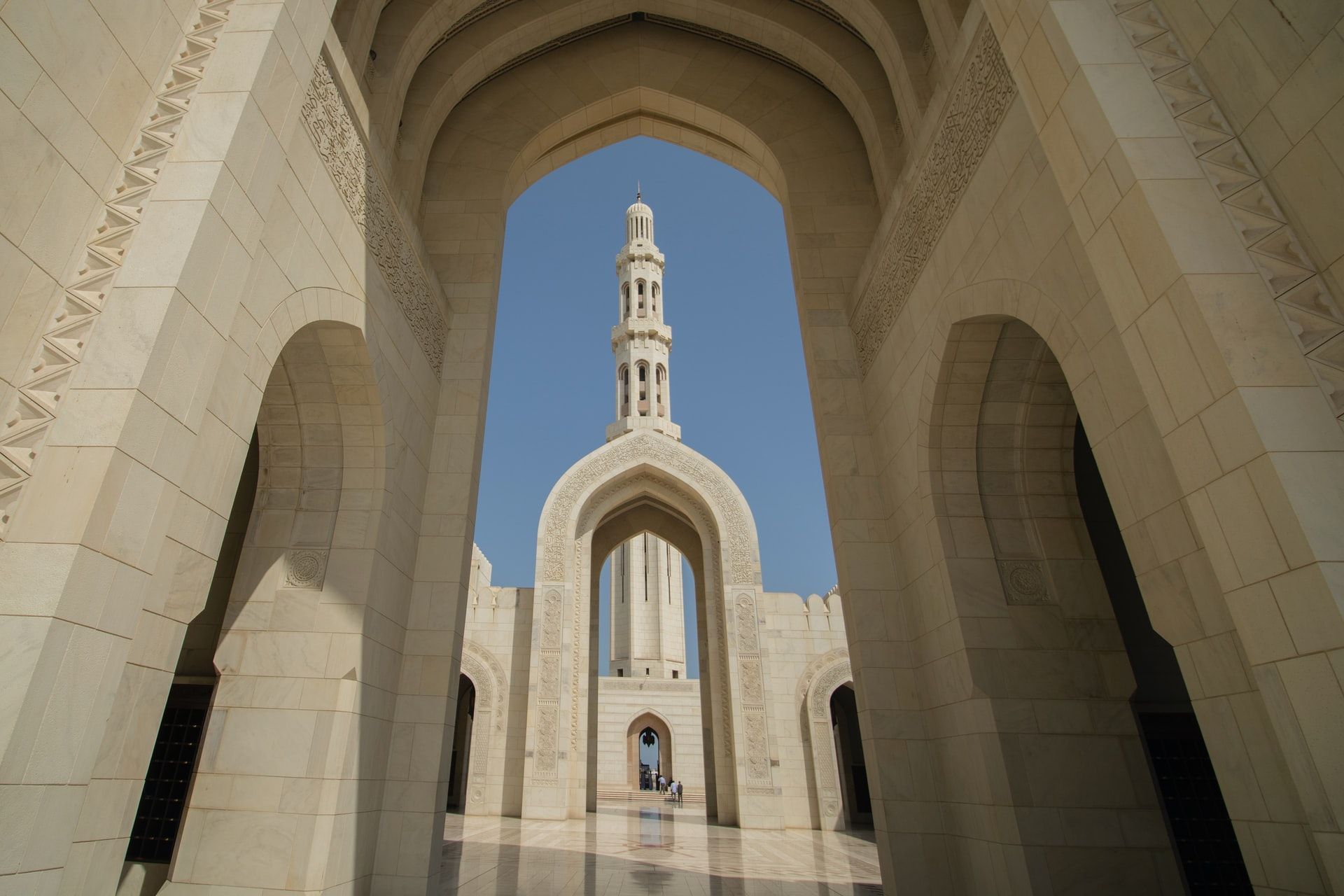
Situated at the heart of Muscat, the mosque is a beautiful blend of rich artistic taste and open natural gardens. The largest in Oman, the Sultan Qaboos Grand Mosque can accommodate nearly 20,000 worshippers at a time.
Sultan Qaboos bin Said Al Said inaugurated the mosque on 4 May 2001 to celebrate thirty years of reign. The design for the building was chosen through an architecture competition held in 1993 and the construction took over six years to complete.
Covering an area of almost 4,16,000 sq m, the mosque is divided into the main prayer hall, the women’s prayer hall, the library and the lecture theatre. The interiors of the main hall are adorned with white and dark grey marbles that showcase intricate leafy and geometrical patterns. It has four pillars carrying the central dome, which rises to 50 metres. The mosque’s website states, “The dome is made up of spherical triangles within a structure of sides and marble columns, crossed with pointed arches and decorated with porcelain panels. Timber panels stretch in a fashion that reflects the architectural development of Omani ceilings.”
Islamic embellishments and verses from the Quran in Thuluth script are engraved on the main door. Others are juxtaposed with stained glass panels.
Adding to the list of all things large, the mosque showcases what was once the world’s largest chandelier. The 24-carat gold-plated chandelier is studded with 600,000 Swarovski crystals and 1,122 bulbs that stands as a jewel in the men’s prayer hall.
A mammoth 21-ton handmade prayer carpet is a star attraction in the mosque. It took nearly 600 Iranian women four years to complete it. It consists of 1,700 million knots and features 28 natural vegetable dyes.
The mosque is the confluence of Islamic, Middle Eastern and Omani architectural styles. It is made with 30,000 tonnes of pink sandstone imported from India, along with local granite and white marble. The mosque holds the country’s tallest minaret, measuring 90 metres, along with four other minarets that symbolise the five pillars of Islam: the profession of faith, prayers, giving of alms, fasting and pilgrimage.
With a focus on learning and cultural advancement, the mosque library has 20,000 books and volumes of science, Islamic culture and humanity. The Institute of Islamic Sciences is also here to enable young minds to gain religious knowledge.
Jama Masjid, India
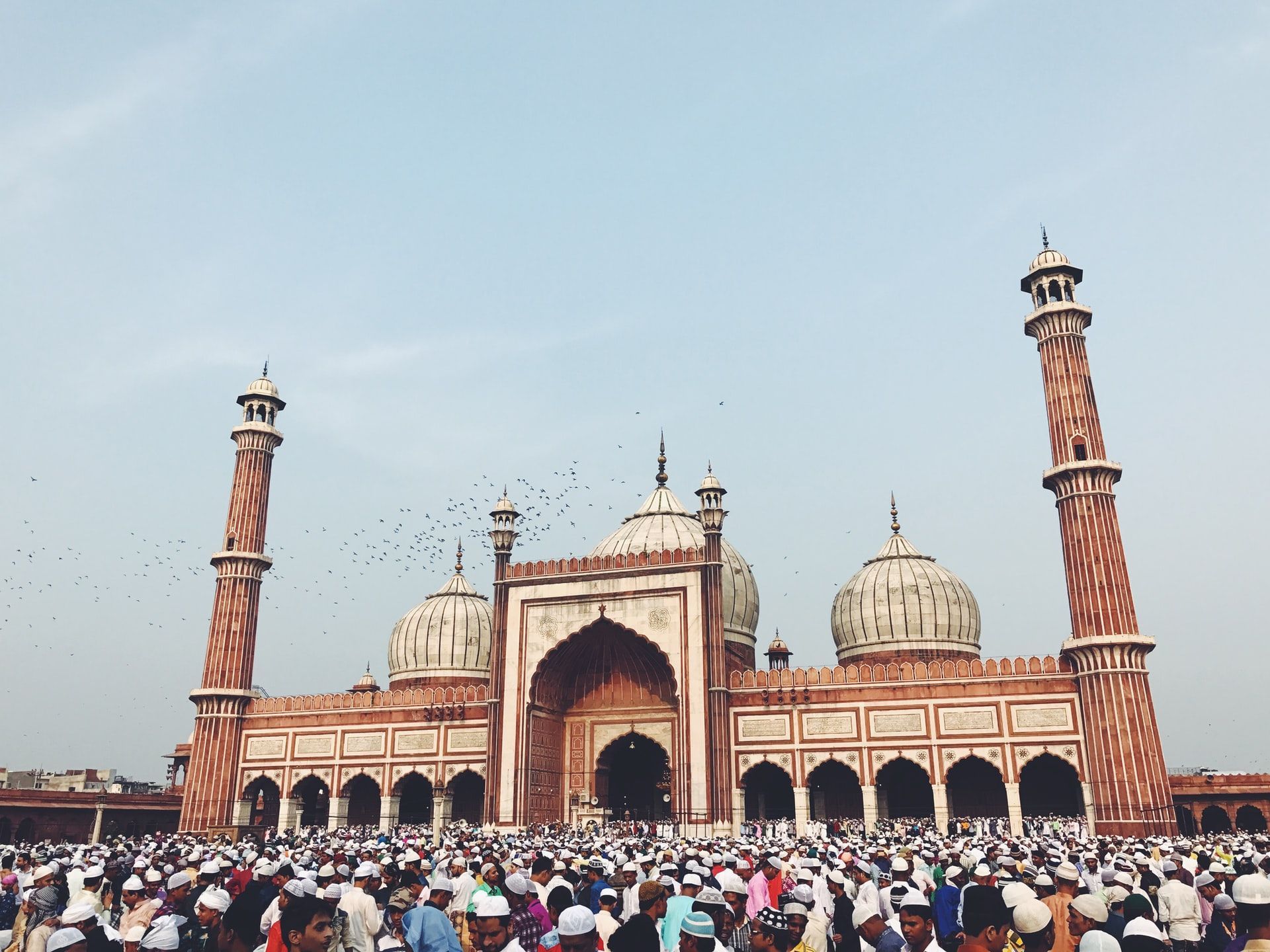
Another brainchild of the maker of the Taj Mahal, the construction of the Jama Masjid in Delhi began in 1644 and became the final architectural extravagance of Mughal Emperor Shah Jahan. The highly revered mosque has three massive gates, four towers and two 40 metre-high minarets constructed with strips of red sandstone and white marble.
The second-largest mosque in the country, the Jama Masjid is one of the finest specimens of Mughal architecture and is positioned in the direction of Mecca. The Arabic name translates to Friday mosque and is one of the most important sites during Eid in India. The mosque, along with its courtyard, stands atop a podium with over 30 steps.
The entire structure is principally made of red sandstone and some marble inlay. The front courtyard is over 99 square metres and can hold more than 25,000 people. Back in the day, the impressive eastern gateway was reserved only for Royals while the other northern and southern gateways were open to the public. Two 40-metre minarets are located at the northeastern and southeastern corners of the mosque complex.
Adorned with stellar Persian calligraphy inscriptions above its entrance, the central prayer hall is the largest interior space with an area of 27.4 × 60.96 square metres. Three huge marble domes are perched on the hall that seem to trap the bygone Mughal royalty in all its carvings.
Wazir Khan Mosque, Pakistan
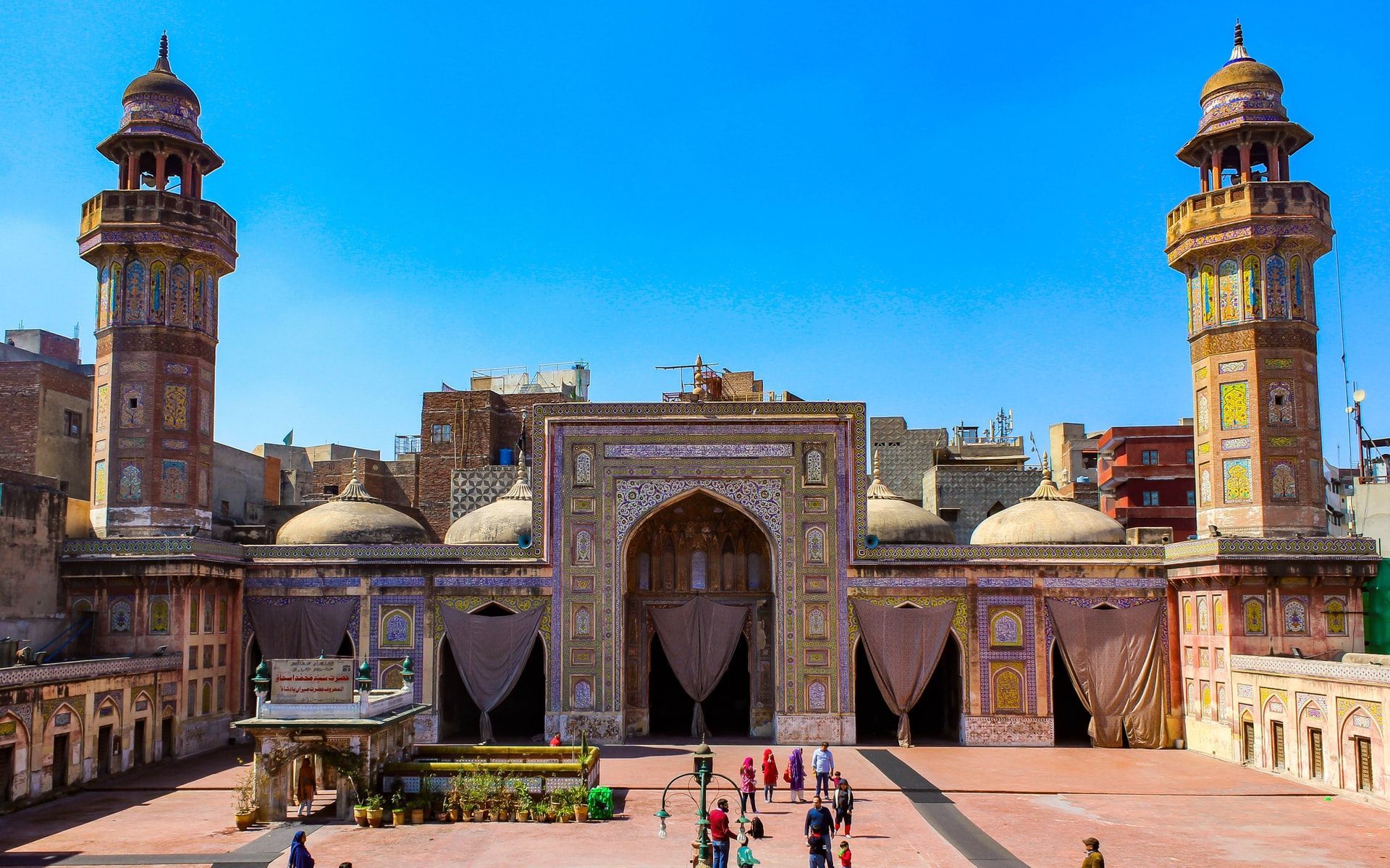
The busy roads of the walled city of Lahore encircle the majestic Wazir Khan Mosque in Pakistan. Another splendid specimen of architecture produced during the reign of Mughal Emperor Shah Jahan, the mosque was built by the then Governor (Wazir) of the Punjab, Hakim Shaikh Ilm-ud-din Ansari and took over seven years for construction to complete.
Set on the Royal Trail, the building is located close to the Delhi gate, one of the 13 gates through which the Mughal Emperors entered the Lahore Fort. Measuring 86.17 x 50.44 square metres, the rectangular mosque is surrounded by four imposing minarets that lend grandness to the structure. When visitors step inside from the main entrance, the brick and tiled main mosque is the first structure to welcome them. It is reminiscent of the typical architectural style of the area and period.
Massive domes rest as crowns on each of the mosque’s five compartments, which lead to a large courtyard. The enormous sunlit courtyard embodies peace and tranquillity amidst all the hustle of the neighbouring streets.
The Wazir Khan Mosque walls showcase some of the finest examples of fresco and mosaic tile (kashi kari) work of the era. The Calligrapher’s Bazaar, with a large verandah (dewhri) and dome, is another noted feature of this grand mosque. Well-known khattats (master calligraphers) have inscribed verses from the Quran and Persian poetry in elegant outlines and forms that adorn the outside walls, which are flanked by symmetrical floral designs.
A total of 28 cubicles (hujras) and two pavilions, facing each other across its width, line the courtyard on its northern and southern sides.
Crystal Mosque, Malaysia
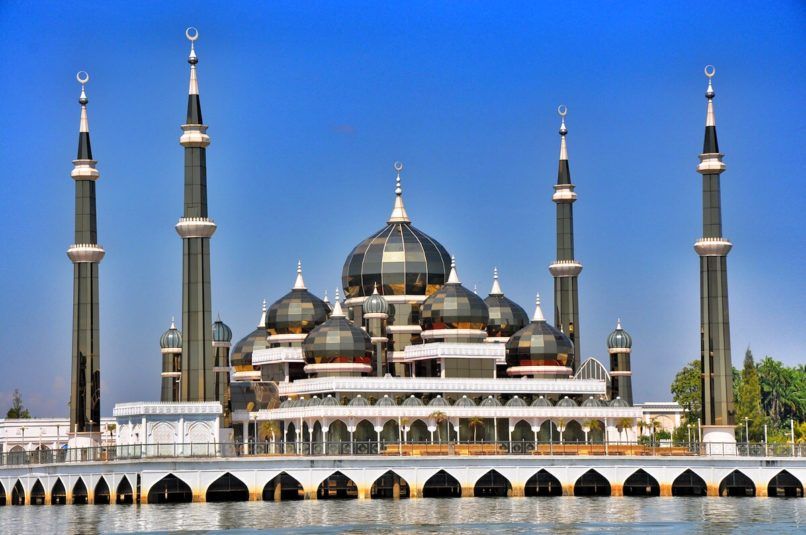
Sitting majestically in Kuala Terengganu’s Wan Man Island, the Crystal Mosque is a unique example of futuristic modern style and elegance. Built in 2008, the mosque structure is coated with steel, glass and crystal. It is the first mosque in the world to have solar panels, WiFi connection and electronic Qurans.
The surrounding waters seem to be the muse for the mosque’s exterior as the steel and glass shimmer and reflect the river it overlooks. The sleek and modern appearance gets even more heightened when the building is illuminated from within in the evening., turning the place into a dazzling spectacle. One of the excellent examples of modern-day architecture, the mosque is sure to turn heads with its intricately decorated interiors.
The Crystal Mosque in Malaysia also displays replicas of other famous mosques such as the Taj Mahal, Masjid al-Haram, Aleppo Citadel and Al-Hambra Mosque. As part of the Islamic Heritage Park the mosque and its surroundings often become the choicest location for photoshoots.
(Main and featured image credit: Matteo Colombo/Getty Images)
The post 10 of the most beautiful mosques around the world appeared first on Lifestyle Asia Singapore.

